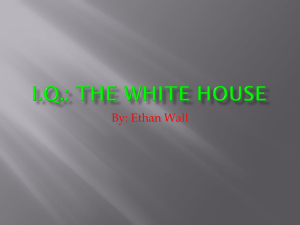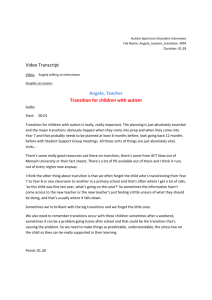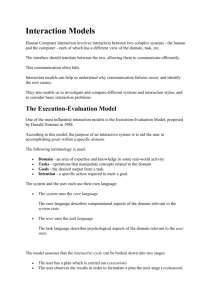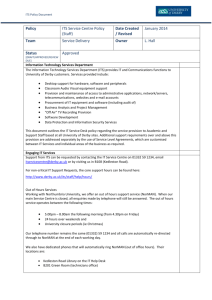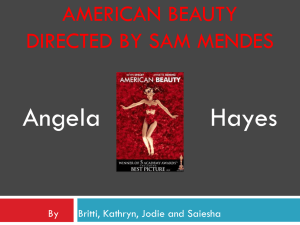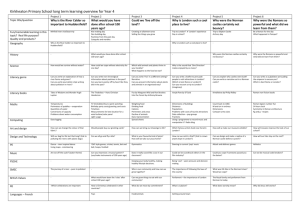Literary Term Review
advertisement
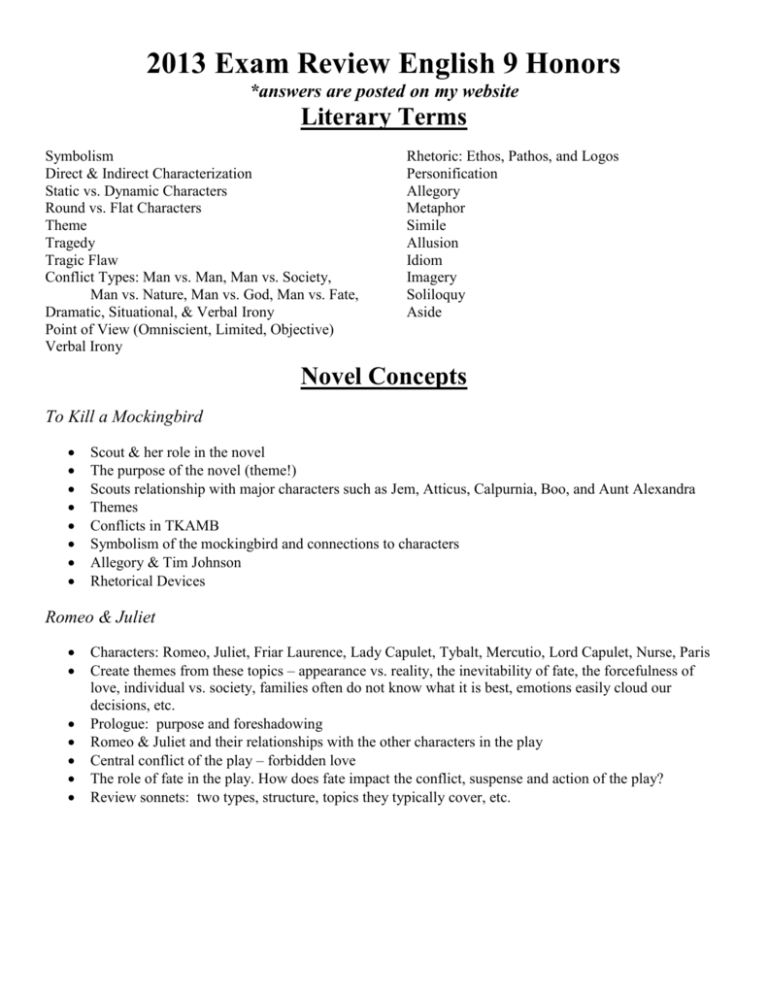
2013 Exam Review English 9 Honors *answers are posted on my website Literary Terms Symbolism Direct & Indirect Characterization Static vs. Dynamic Characters Round vs. Flat Characters Theme Tragedy Tragic Flaw Conflict Types: Man vs. Man, Man vs. Society, Man vs. Nature, Man vs. God, Man vs. Fate, Dramatic, Situational, & Verbal Irony Point of View (Omniscient, Limited, Objective) Verbal Irony Rhetoric: Ethos, Pathos, and Logos Personification Allegory Metaphor Simile Allusion Idiom Imagery Soliloquy Aside Novel Concepts To Kill a Mockingbird Scout & her role in the novel The purpose of the novel (theme!) Scouts relationship with major characters such as Jem, Atticus, Calpurnia, Boo, and Aunt Alexandra Themes Conflicts in TKAMB Symbolism of the mockingbird and connections to characters Allegory & Tim Johnson Rhetorical Devices Romeo & Juliet Characters: Romeo, Juliet, Friar Laurence, Lady Capulet, Tybalt, Mercutio, Lord Capulet, Nurse, Paris Create themes from these topics – appearance vs. reality, the inevitability of fate, the forcefulness of love, individual vs. society, families often do not know what it is best, emotions easily cloud our decisions, etc. Prologue: purpose and foreshadowing Romeo & Juliet and their relationships with the other characters in the play Central conflict of the play – forbidden love The role of fate in the play. How does fate impact the conflict, suspense and action of the play? Review sonnets: two types, structure, topics they typically cover, etc. Sonnet Practice SONNET 30 When to the sessions of sweet silent thought I summon up remembrance of things past, I sigh the lack of many a thing I sought, And with old woes new wail my dear time's waste: Then can I drown an eye, unused to flow, For precious friends hid in death's dateless night, And weep afresh love's long since cancell'd woe, And moan the expense of many a vanish'd sight: Then can I grieve at grievances foregone, And heavily from woe to woe tell o'er The sad account of fore-bemoaned moan, Which I new pay as if not paid before. But if the while I think on thee, dear friend, All losses are restored and sorrows end. 1. What kind of sorrow does the speaker think about in line 3 of Sonnet 30 when he says, “I sigh the lack of many a thing I sought?” a. Sorrow over things he wanted but never got. b. Sorrow over things he got but let slip through his fingers. c. Sorrow over how few opportunities he has had in life. d. Sorrow over riches that have lost their appeal. 2. In Sonnet 30, the speaker laments departed friends. However, he is cheered when thinking— a. that they really weren’t such great friends after all. b. that they will return someday. c. of the friend the poem is addressed to. d. all the friends he has now. 3. The metaphors in Sonnet 30 come mostly from the fields of— a. war and shipping. b. poetry and journalism. c. law and finance. d. religion and science. 4. The message of Sonnet 30 could be summarized as— a. There is no cure for sorrow. b. Love is the remedy for sorrow. c. Life is short, but art lasts forever. d. It is better to keep busy than to lose oneself in thoughts and memories. 5. The form of a Shakespearean sonnet is— a. fourteen lines of unrhymed iambic pentameter. b. three quatrains followed by a couplet. c. an octave followed by a sestet. d. seven rhymed couplets. The Reading Comprehension Section The following passage is from a 2003 novel about a young woman named Angela who at age eight left China with her family to move to San Francisco. (5) (10) (15) (20) (25) (30) (35) (40) Our parents had known each other in China; we’d even taken the same boat to America. However, within five years of our arrival in San Francisco, Norman and I had become strangers. Relatives already established in the city helped Norman’s parents assimilate. Within a year, they had not only learned English, but had also become real estate moguls. I learned all this from the Chinese American gossip machine that constantly tabulated every family’s level of success. The machine judged my family lacking. My parents ran a grocery store and, unlike Norman’s family, gravitated to the immigrant subculture. They never learned English, but they respected that I tamed that beast of a language. I was my parents’ communication link with the “outside world.” My parents denied themselves in order to ensure that I could attend Baywood, a top private high school. That was where Norman and I crossed paths again. However much my relative mastery of English had elevated my status at home, at Baywood I remained a shy and brainy outsider. Norman was very popular: he played football and was elected class president. He and gorgeous Judy Kim were named King and Queen of the Winter Ball; their portrait adorned every available bulletin board. I scoffed at the celebrity silently. Back then, I did everything silently. Compared to Norman, who had already achieved the American teenage ideal, I was anonymous. From the sidelines I observed his triumphs with barely acknowledged envy. In May of our freshman year, Norman approached me after our chemistry class. “Hey, Angela,” he said as my heart leapt into my throat. “I missed class a couple of days ago. Can I copy your notes?” “Sure,” I said. I was horrified to find myself blushing. We soon became study buddies. It was all business—no small talk beyond the necessary niceties. But the hours we piled up studying together generated an unspoken mutual respect and an unacknowledged intimacy. Judy noticed this and took an increasing dislike to me. This relationship continued throughout high school. One day in eleventh grade, without looking up from the math problem he was working on, Norman asked: “What schools are you applying to?” It was the first time he had shown any real personal (45) (50) (55) (60) (65) (70) (75) interest in me. “Berkeley, if I’m lucky,” I said. “You could probably get in anywhere.” “What do you mean?” He looked up from his math problem and met my gaze. “Berkeley is just across the bay. Don’t you want to experience something new for once? I’m applying to schools back East,” he said. “You should, too.” Not for the first time, an exciting vision of ivy-covered walls and perhaps even a new identity swept over me and was almost immediately subsumed by a wave of guilt. “But what about my parents?” “But what about you?” Norman had broken a taboo. I launched into a self-righteous refutation of the possibility he had dared to voice. I told him that even though I wasn’t popular and my family wasn’t as successful as his, I at least hadn’t forgotten that it was my parents who had brought me here and who had struggled so much for me. How could I make them unhappy? Norman had expected this outburst. He smiled. “We’re not so different, you know. We started out in the same boat. Now we’re in the same boat again.” He laughed. “We’ve always been in the same boat. Our parents might be kind of different, but they want us to have success and be happy.” “You’re so American,” I said in a tone hovering between approval and reproach. “You’re not even worried about leaving your parents to go to school back East.” “That’s not what being American means,” he insisted. “Well, what does it mean, then?” I demanded. Surely, I, and not this superficial football player who needed my academic help, knew what it meant to be American. That very day I had received an A on my American History term paper. “It means, Angela,” he said gently, “that our parents brought us here so we could have the freedom to figure out for ourselves what to do with our lives.” He smiled at my speechlessness and then returned to his math problem. Without looking up from his notebook, he said, “If I can decide to go to school back East, so can you.” Reading Comprehension Review Exercise: Identify the correct answer for each 1. What is the purpose of the information in the first sentence? a. To show Angela and Norman’s similar histories so as to emphasize their current differences b. To emphasize that both Angela and Norman have come a long way since their childhoods in China c. To let the reader know that Angela came from a poor family that could not afford to fly to America d. To make the reader think that Norman and Angela will inevitably become friends e. To let the reader see how highly Angela values her family’s history 2. The word “tabulated” in line 7 emphasizes that a. The other Chinese immigrants were very aware of who was succeeding in a material way and who was not b. Angela’s neighbors calculated the exact amount of money her family was earning c. Norman’s family checked the prices of everything they owned d. Angela lived in a poor section of San Francisco e. Angela was determined to earn more money than Norman 3. The use of italics in line 51-52 serves to emphasize a. Norman’s unrealistic desire to go to school outside of California b. Norman’s idealistic goals as contrasted with Angela’s lack of ambition c. Norman’s concern that Angela has not thought about her own educational desires d. The small chance that Angela will accomplish her dreams e. The degree to which Angela has undermined her potential 4. Angela’s response in lines 53-58 reveals that she a. Wants Norman to be impressed with her b. Is afraid to express her true emotions c. Stubbornly wants to attend Berkeley d. Is unable to reveal her true ambitions to Norman e. Has consistently adopted her parents’ happiness as her own 5. In line 64, Angela uses the word “American” to differentiate between a. Concern for the future and fear of failure b. Personal ambition and responsibility to one’s parents c. Imagination and conservatism d. Duty to family and duty to friends e. Love for adventure and love for travel 6. In lines 70-71, Angela mentions her A on her history paper in order to a. Suggest that she assumes that she knows the definition of “American” better than Norman b. Emphasize the high quality of her education c. Highlight the irony of knowing the textbook definition of a term versus a real-life meaning d. Remind herself that she has spent many years mastering the English language e. Strengthen her resolve to go to school in Berkeley instead of the East Coast 7. Norman’s statement in lines 71-74 primarily shows him to be a. Selfish in his desires to achieve success b. Ambitious in a manner Angela had not considered for herself c. Dismissive of his parents’ hopes for his future d. Secretly hoping to corrupt Angela’s future plans e. Arrogant in overestimating his abilities 8. Throughout the passage, the main focus is on a. The awkwardness Angela feels knowing that Norman already has a girlfriend b. Angela’s ambition to do well in school and get into a good college c. The challenges Angela faces living in America while feeling like an outsider d. Angela’s excitement over getting an A on her history term paper e. How personal ambition is the key to getting ahead in America 9. From details in the passage, it is clear that a. Angela went ahead with her plan to attend Berkeley b. Angela grew up to be more outspoken c. Norman went on to play football in college d. Angela decided to go to college back East e. Angela majored in math at college Literary Term Review Fill in the Blank: Fill in the correct literary device in the line listed below. Allusion epic hyperbole allegory conflict metaphor aside sonnet denotation character development quatrain theme cliché simile tone 1. ______________________ A 14 line poem written in iambic pentameter. 2. ______________________ Four line section or stanza of a poem. 3. ______________________ In To Kill a Mockingbird this literary device is represented by the struggle of Atticus (and his family) as they fight for justice for Tom Robinson against the racial prejudices of Maycomb. 4. ______________________ In Romeo and Juliet, Romeo uses this literary device to describe Juliet’s beauty by stating that Juliet is, “Like a rich jewel in an Ethiop’s ear; Beauty too rich for use, for earth too dear! 5. ______________________ A long narrative poem that describes the adventures of hero. During the adventure, the hero usually goes to faraway lands and he must face several trials. 6. ______________________ "I nearly died laughing," "I was hopping mad," and "I tried a million times” are representative of this literary device. 7. ______________________ The expressions “below the belt,” “don't get mad, get even,” “love conquers all” and “don’t judge a book by its cover” are all examples of this overused device. 8. ______________________ In Romeo and Juliet, Romeo declares to Juliet, “My lips, two blushing pilgrims, ready stand/.To smooth that rough touch with a tender kiss.” What device is used in the underlined portion? 9. _____________________ In To Kill a Mockingbird, the following description of Boo Radley is best described as what literary device? “Boo was about six-and-a-half feet tall, judging from his tracks; he dined on raw squirrels and any cats he could catch, that’s why his hands were bloodstained—if you ate an animal raw, you could never wash the blood off. There was a long jagged scar that ran across his face; what teeth he had were yellow and rotten; his eyes popped, and he drooled most of the time.” 10. ______________________ The literal or primary meaning of a word. 11. ______________________ Words spoken to the audience or perhaps to another character while other characters are on stage. The other characters pretend to not hear and we the audience get to listen in on the thoughts. 12. ______________________ The main message or central idea of a story. 13. ______________________ An extended narrative that carries a second, abstract meaning along with the surface meaning. A story of symbols. 14. ______________________ The author’s attitude towards the subject. 15. ______________________ When a writer or speaker refers to something from history or literature and expects her audience to understand to what she is referring. Multiple Choice: Please select the best answer to each question. 16.________ In To Kill a Mockingbird, Jem, Scout and Dill are scared by the myths and legends of Boo Radley, yet the reader knows that Boo Radley is just a shy, timid man. A. Dramatic Irony B. Situational Irony C. Verbal Irony 17. _______ “I’m so glad the elevator is stuck; it’s been a lifelong dream that this would happen” is an example of A. Dramatic Irony B. Situational Irony C. Verbal Irony 18. _______“When there was an assassination attempt made on President Ronald Reagan, all the shots fired by John Hinckley initially missed the President. However, one of the bullets ricocheted off the bullet proof limousine and struck the President on the chest. Thus, although the vehicle was actually made bullet proof for the protection of the President, it was partially responsible for him being shot.” A. Dramatic Irony B. Situational Irony C. Verbal Irony 19. _______“Sometimes you must be cruel to be kind” is an example of A. Apostrophe B. Paradox C. Hyperbole D. Tone 20. _______What is the tone of the following passage: “Gently smiling, the mother tenderly tucked the covers up around the child’s neck, and carefully, quietly, left the room making sure to leave a comforting ray of light shining through the opened door should the child wake”? A. Pompous B. Serious C. Calm D. Playful 21. _______“Rise, fair sun, and kill the envious moon” is an example of A. Apostrophe B. Understatement C. Hyperbole D. Personification 22. _______“What’s in a name? That which we call a rose/ By any other name would smell as sweet” is an example of A. Apostrophe B. Simile C. Aside D. Understatement 23._______ In To Kill a Mockingbird, the mockingbird symbolizes A. Innocence B. Guilt C. Fear D. Friendship E. Stereotypes 24._______ A traditional story, especially one concerning the early history of a people or explaining some natural or social phenomenon. A. Allegory B. Myth C. Quatrain D. Epic 25. _______Which of the following examples best foreshadows Atticus losing Tom Robinson’s trial? A. Mr. Cunningham’s appearance at the jail B. Jem losing his pants in Nathan and Boo Radley’s yard C. Jem breaking his arm D. Atticus teaching Scout and Jem about true courage E. The fire at Miss Maudie’s house 26._______ An interruption in a story to tell about events that happened before the current action of the story A. Hyperbole B. Understatement C. Foreshadowing D. Flashback 27. _______A statement which lessens or minimizes the importance of what is meant A. Understatement B. Hyperbole C. Epic D. Allegory Point of View: Identify the point of view in each passage below. 1. She went to her best friend’s house to study. When she got there, she started to wonder how big her best friend’s dog Jasper had gotten. They went outside and rode their bikes for 20 minutes, went back to the house to study, ate dinner, and then she went back home. 2. She went to her best friend’s house to study. When she got there, they rode their bikes for 20 minutes, went back to the house to study, ate dinner, and then went back home. 3. She went to her best friend’s house to study. When she got there, she started to wonder how big her best friend’s dog Jasper had gotten. They went outside and rode their bikes for twenty minutes. When they went back to study, her best friend, Sam, wondered when her legs would stop hurting. They ate dinner after studying and then she went home. Answer Sheet Sonnet Practice—Multiple Choice 1. 2. 3. 4. 5. A C C B B Reading Comprehension—Multiple Choice 1. 2. 3. 4. 5. 6. 7. 8. 9. A A C D B A B C D Literary Term Review—Fill in the blanks 1. Sonnet 2. Quatrain 3. Conflict 4. Simile 5. Epic 6. Hyperbole 7. Cliché 8. Metaphor 9. Character development 10. Denotation 11. Aside 12. Theme 13. Allegory 14. Tone 15. Allusion Point of View: 1. Third person limited 2. Third person objective 3. Third person omniscient Literary Term Review—Multiple Choice 16. A 17. C 18. B 19. B 20. C 21. D 22. B 23. A 24. B 25. D 26. D 27. A The Research Section MLA Outline Organization Block Quote Paraphrase Works Cited Thesis Statement Direct Quotation Cliché In-text Citation Transition Plagiarism Page Numbers General Knowledge Header Heading Documentation 1. ___________________ information you already knew and your readers are likely to know 2. ___________________ relying excessively on the text of another writer 3. ___________________ includes the writer’s name, teacher’s name, course, and date 4. ___________________ putting into your own words what the source says 5. ___________________ word for word what the source says, enclosed in quotation marks 6. ___________________ acknowledging a source’s information within parentheses 7. ___________________ a lengthy passage set off from the rest of the text, which does not need to be enclosed in quotation marks 8. ___________________ the order in which information is presented in a paper 9. ___________________ any effort within the paper to recognize a source for information 10. ___________________ identifies the focus of your writing 11. ___________________ an overused word or phrase that springs quickly to mind (avoid them!) 12. ___________________ located in the upper right corner of every page of the paper 13. ___________________ a listing of all the works used by the writer in the context of the paper 14. ___________________ preliminary plan of the paper’s organization prior to the actual writing of the paper 15. ___________________ used to tie details of writing together so they read smoothly 16. ___________________ guidelines used by writers to ensure consistency in the format and writing of research papers 17. ___________________ these are needed after author last name for documenting print sources Research Review Exercise: Identify the correct answer for each. 1. The heading of a paper in MLA format should appear as follows: a. Student’s name, course, date, teacher’s name b. Teacher’s name, student’s name, course, date c. Student’s name, course, topic, date d. Student’s name, teacher’s name, course, date 2. The title of a paper in MLA format should be a. Placed on a separate title page b. In the same font and style as the rest of the paper c. Bolded and underlined d. A complete sentence 3. A typical entry for a book on a Works Cited page would include the information listed below in the order presented a. Author’s name, title of the work, publication information, page numbers used within the paper b. Author’s name, title of the work, publication information c. Title of the work, author’s name, publication information d. Author’s name, title of the work, page numbers used within the paper, publication information 4. A typical in-text citation includes the following two items a. Author’s last name and page number(s) b. Publisher of the work and page numbers c. Author’s first and last name and page numbers d. Author’s late name and publisher of the work 5. Information from a source should be cited a. If the source is directly quoted or paraphrased b. If the source is only directly quoted c. Only if the information is controversial d. Only when information is from a source, whose name appears in two or more entries in the list of Works Cited 6. The spacing of a paper written in MLA format should always be a. Single-spaced b. Double-spaced, except for the Works Cited page c. Double-spaced, including the Works Cited page d. An option of the writer of the paper 7. The following are examples of outside sources a. Books and reference materials b. Articles and critical essays c. Library databases d. All of the above 8. A writer plagiarizes who a. Copies the exact wording of a source b. Retains too much of a source’s exact wording c. Paraphrases information from a source and neglects citing the source d. All of the above 9. Information is considered “General Knowledge” if a. The writer already knew the information without researching it b. The writer already knew information and believes that the reader will already know it, too c. The information came from an interview d. The information can be found in several sources 10. A source’s last name does not have to be given in an in-text citation if a. The source’s name has already been used within the sentence b. The source’s name appears in the list of Works Cited c. The source has authored two or more works used in the paper d. The source is one of two or more authors/editors of the work 11. An ellipsis […] used in a direct quotation represents a. A change in the source’s words b. Omitted words, phrases, or sentences c. Paraphrased information d. That the quotation was shortened because of a lack of space 12. A research paper should contain a. More direct quotes than paraphrased information b. More personal opinion than direct quotations or paraphrased information c. A balance of direct quotations and paraphrased information d. More paraphrased information than direct quotations 13. What is the difference between formal and informal writing? What are some informal words you should avoid in academic writing? ANSWERS Research—Fill In 1. 2. 3. 4. 5. 6. 7. 8. 9. 10. 11. 12. 13. 14. 15. 16. 17. General Knowledge Plagiarism Times New Roman Heading Paraphrase Double spacing In-text citation Direct Quotation Outline Documentation Thesis Header Works Cited Outline Transition MLA Page Numbers Research—Multiple Choice 1. 2. 3. 4. 5. 6. 7. 8. 9. 10. 11. 12. 13. D B B A A C D D D A B B Formal is done for academic purposes and informal is your “everyday” writing/texting/emailing 14. Avoid using “I…” and any slang/abbreviations. Stick with standard, written English
